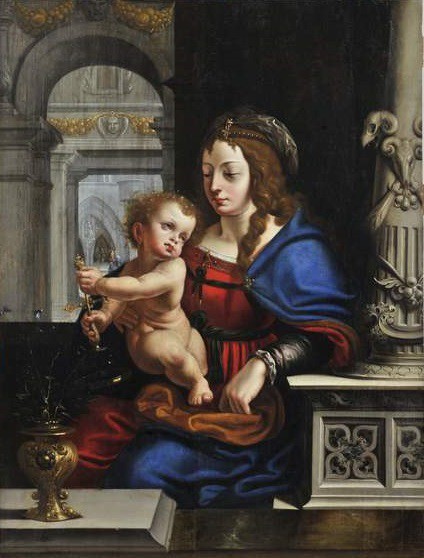“Art Collecting in the Potocki Family” – the new exhibition on the first floor of the Wilanów Palace

On the first floor of the Wilanów Palace, you can currently see excellent paintings from the collection initiated by Stanisław Kostka and Aleksandra Potocki – incl. the famous ‘Salvator Mundi’ (‘Savior of the World’) – once considered the work of Leonardo da Vinci himself.
This painting exhibition does its best to faithfully reproduce the collecting passions of Stanisław Kostka Potocki, whose travels across Europe were interspersed with visits to the most established art galleries. Those foreign collections were a great source of inspiration. A read of Potocki’s travel diaries proves that the magnate planned a gallery of his own already when purchasing paintings from different historic periods. In his notebook with copies of artist signatures (Steganographie des Peintres), Potocki evaluates the oeuvres of painters by awarding points in four categories: composition, drawing skills, colours, and expression (a copy of one sheet is presented in the display case). The Wilanów collection, made available to the public by Aleksandra and Stanisław Kostka Potocki in 1805, was hardly a work of chance. It is the product of a well-thought-out and consistently built collecting concept, which was made a reality in suitable surroundings, with respect to the genius loci of the historic royal residence. For its creation, the collection required not only material means, but also intellectual, emotional and knowledge capital.
What does the gallery offer? Works by the Leonardeschi, including the unusual version of Salvator Mundi purchased in 1798 as a painting by the master himself, as well as paintings by the Luinis, who cooperated closely with Leonardo da Vinci (two putti, fragment of a larger painting). Moreover, the exhibition boasts paintings by Andrea del Sarto, Cima de Conegliano, and Jan Gosseart also known as Mabuse (several Madonna images).

An important part of the collection is formed by works created in Rubens’ studio – maybe even the master himself gave them the finishing stroke. The magnificent Madonna with the Child stand out from the other works. The double portrait of Saint Pippin and Saint Begga is equally interesting, as it offers a psychological study of two individuals dressed in refined medieval attire. The Death of Seneca is a moving depiction of the great thinker’s fully conscious departure from the earthly realm. Two paintings by Jan Lievens represent the painting style initiated by Caravaggio which uses strong light and shadow contrasts. The works are displayed on the two sides of the fireplace. The small in size, yet exquisite in taste collection of paintings by Lucas Cranach the Elder and his studio merits special attention: Portrait of a Girl with Forget-Me-Nots, Lucretia, and Salome with the Head of John the Baptist. The perfect landscapes, most numerously represented by works from the studio of Nicolas Poussin, evoke associations with Arcadia, the mythical land of happiness and wellbeing.
The paintings have been grouped by composition style into coherent modules full of condensed content. These works constitute the core of research contributing to the discussion on relations between the original – copies – imitations – and inspirations, which debate has already been initiated by the ‘Leonardiana in Polish Collections’ exhibition.
suggested

New exhibition at Chinese Cabinets – restoring the memory of the collections of Stanisław Kostka Potocki and his descendants
In 2019, a new exhibition commemorating the collector's passions of Stanisław Kostka Potocki and his descendants was opened at the …

Potocki Collection Gallery
In March 2022, after the renovation of the northern and southern galleries on the first floor of the Wilanów Palace, …

History of the collection
Already Jan III collected works of art and exquisite objects of everyday use. However, only a fraction of his collection …

What you can see in the palace
When Jan Sobieski accepted the royal title in 1676 and took the throne as Jan III, the Royal Castle, austere …

Opening hours
PalaceFor individual visitors the Wilanów Palace is open:from January 8, 2024 – Mondays, Tuesdays, Thursdays, Fridays, Saturdays, Sundays from 10.00 …

Regulations for visitors to the Palace and exhibitions at the Museum of King Jan III's Palace at Wilanów
1. You are welcome to visit us:a) on Mondays, Tuesdays, Fridays, Saturdays and Sundays between 10.00 a.m. and 4.00 p.m. …














